1, Traversal of binary tree
Access each node in the tree according to a search path, so that each node is accessed. It is mainly divided into first order traversal, middle order traversal, second order traversal and sequence traversal
2, Preorder traversal
2.1 manual calculation
The exam usually gives the shape of a tree and writes its preorder traversal
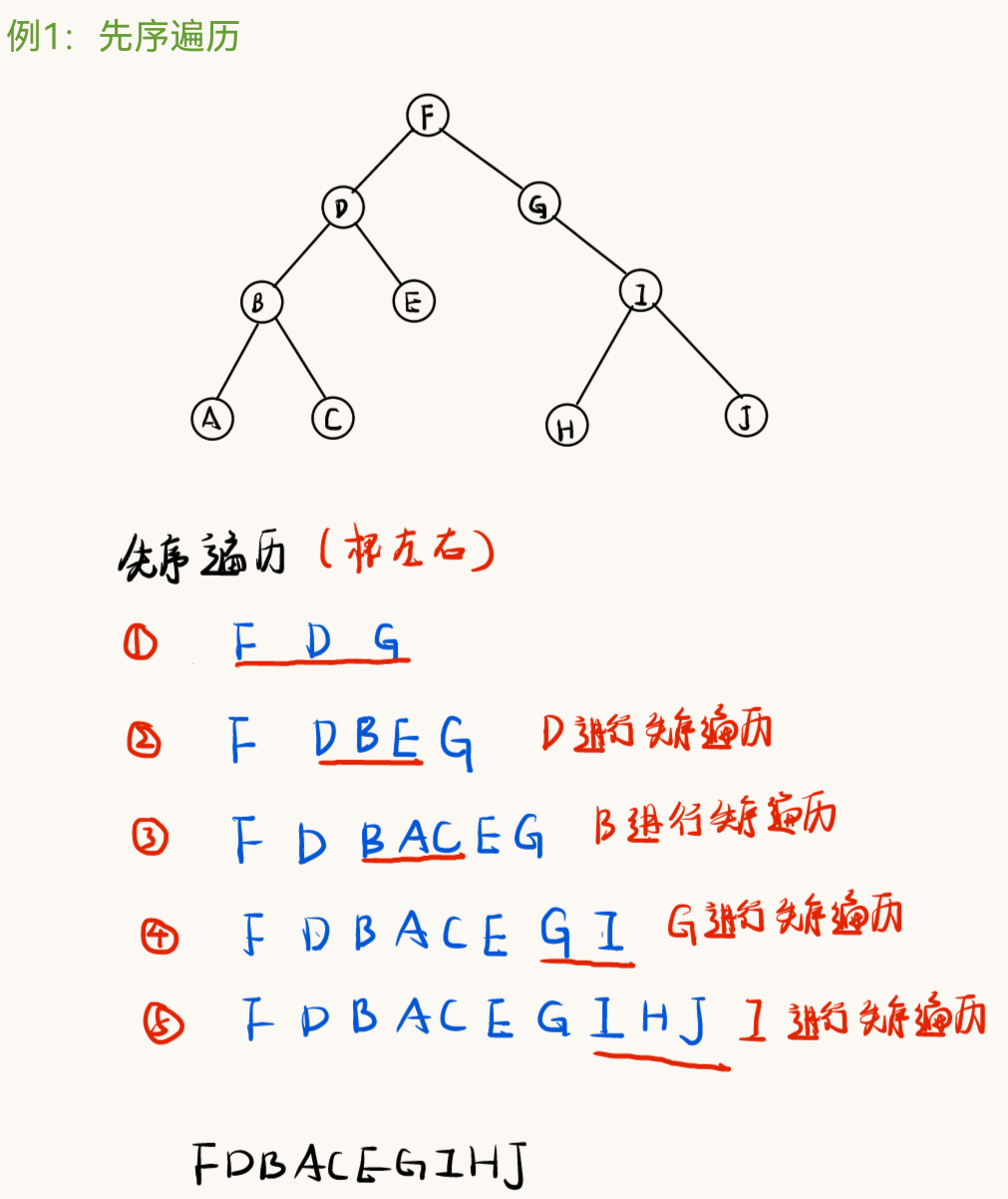
2.2 code
- Recursive preorder traversal code
void PreOrder(BiTree T){
if(T!=NULL)
visit(T);//Access root node
PreOrder(T->lchild); //Recursive traversal of left subtree
PreOrder(T->rchild); //Recursive traversal of right subtree
}
- Non recursive preorder traversal code
void PreOrder2(BiTree T){
InitStack(S);//Initialize stack S;
BiTree p = T;//Initialization p is a traversal pointer
while(p||!IsEmpty(S)){ //Loop when stack is not empty or p not empty
if(p){ //All the way to the left
visit(p); //Access current node
Push(S,p); //Stack current node
p=p->lchild; //The left child is not empty. Go straight to the left
}
else{ //Exit the stack and turn to the right subtree of the stack node
Pop(S,p); //Stack top element out of stack
p=p->rchild;//Go to the right subtree, and p is the right child of the current node
} //Return to the while loop and continue to enter the if else statement
}
}
3, Medium order traversal
3.1 manual calculation
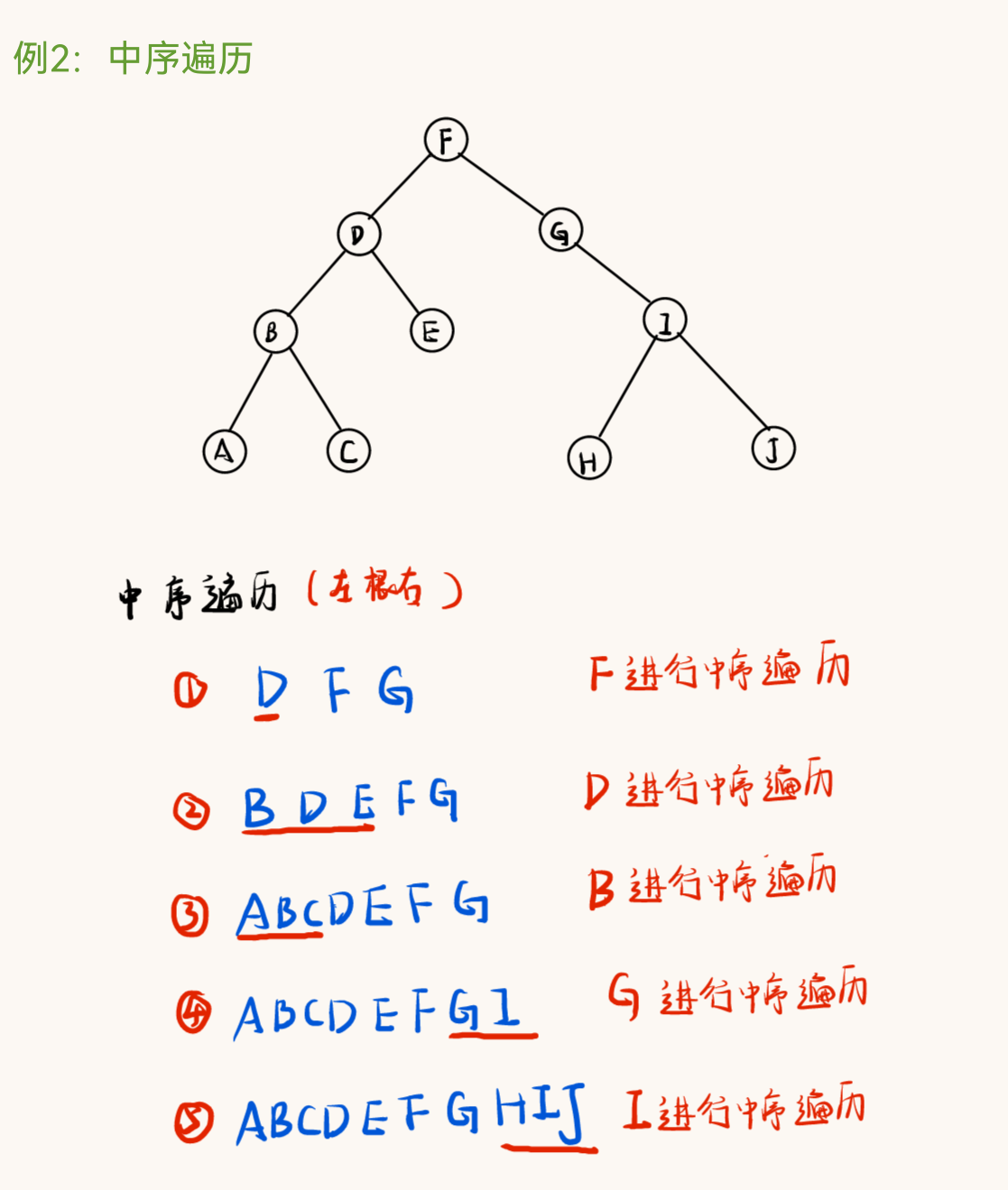
3.2 code
- Recursive middle order traversal code
void InOrder(BiTree T){
if(T!=NULL)
InOrder(T->lchild); //Recursive traversal of left subtree
visit(T);//Access root node
InOrder(T->rchild); //Recursive traversal of right subtree
}
- Non recursive middle order traversal code
void InOrder2(BiTree T){
InitStack(S);//Initialize stack S;
BiTree p = T;//Initialization p is a traversal pointer
while(p||!IsEmpty(S)){ //Loop when stack is not empty or p not empty
if(p){ //All the way to the left
Push(S,p); //Stack current node
p=p->lchild; //The left child is not empty. Go straight to the left
}
else{ //Exit the stack and turn to the right subtree of the stack node
Pop(S,p); //Stack top element out of stack
visit(p); //Access out of stack node
p=p->rchild;//Go to the right subtree, and p is the right child of the current node
} //Return to the while loop and continue to enter the if else statement
}
}
4, Postorder traversal
4.1 manual calculation
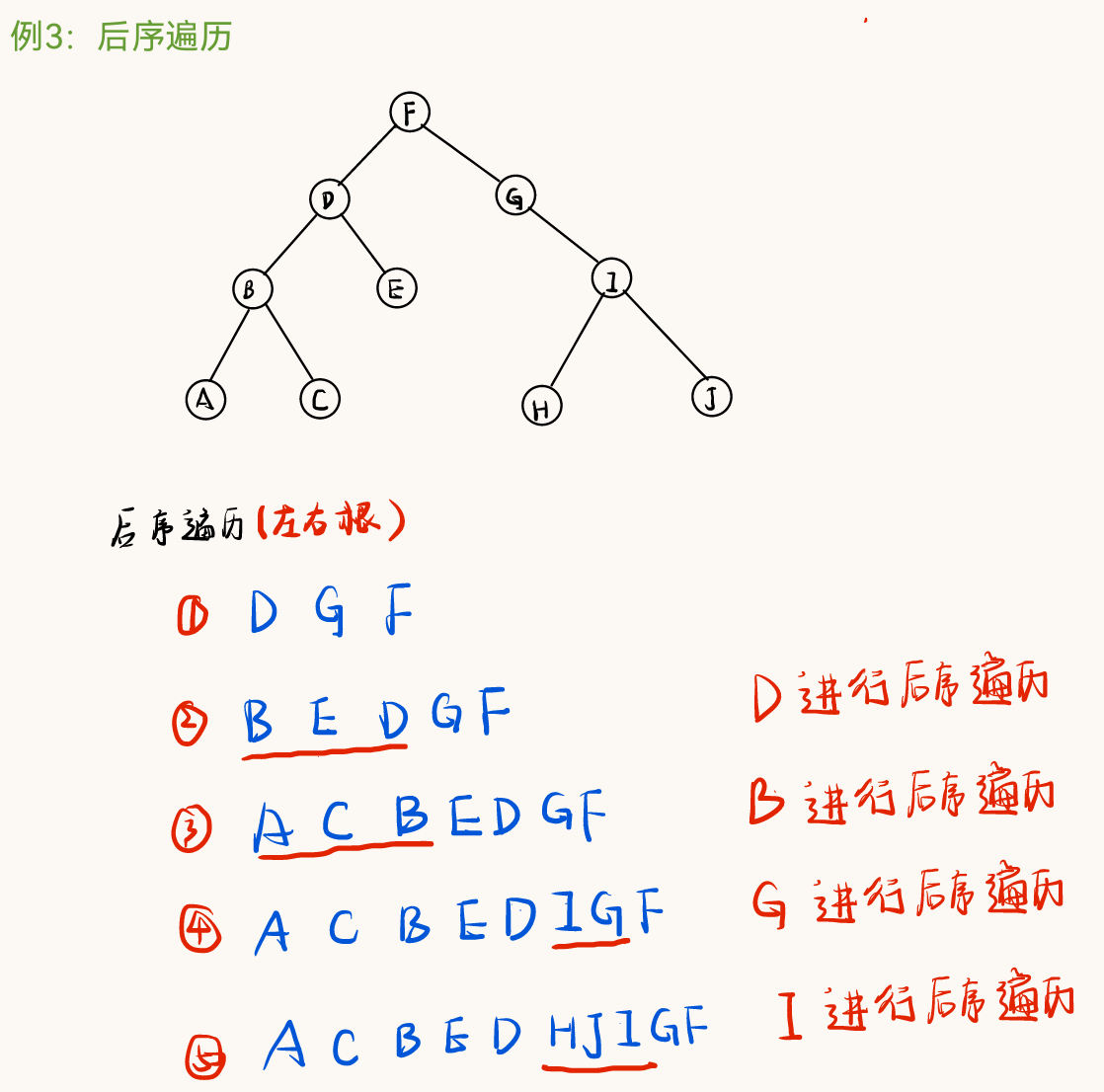
4.2 code
- Recursive postorder traversal code
void PostOrder(BiTree T){
if(T!=NULL)
visit(T);//Access root node
PostOrder(T->lchild); //Recursive traversal of left subtree
PostOrder(T->rchild); //Recursive traversal of right subtree
}
- Non recursive postorder traversal code
void PostOrder2(BiTree T){
InitStack(S);//Initialize stack S;
BiTree p = T;//Initialization p is a traversal pointer
while(p||!IsEmpty(S)){ //Loop when stack is not empty or p not empty
if(p){ //All the way to the left
Push(S,p); //Stack current node
p=p->lchild; //The left child is not empty. Go straight to the left
}
else{ //towards the right
GetTop(S,p); //Read stack top node (not out of stack)
if(p->rchild &&p->rchild!=r) //If the right subtree exists and has not been accessed
p = p->rchild; //turn right
else{ //Otherwise, pop up the node and access it
pop(S,p); //Pop up node
visit(p->data); //Access this node
r = p; //Record the most recently visited nodes
p=NULL; //After the node is accessed, reset the p pointer
} //else
} //while
}
5, Sequence traversal
5.1 manual calculation
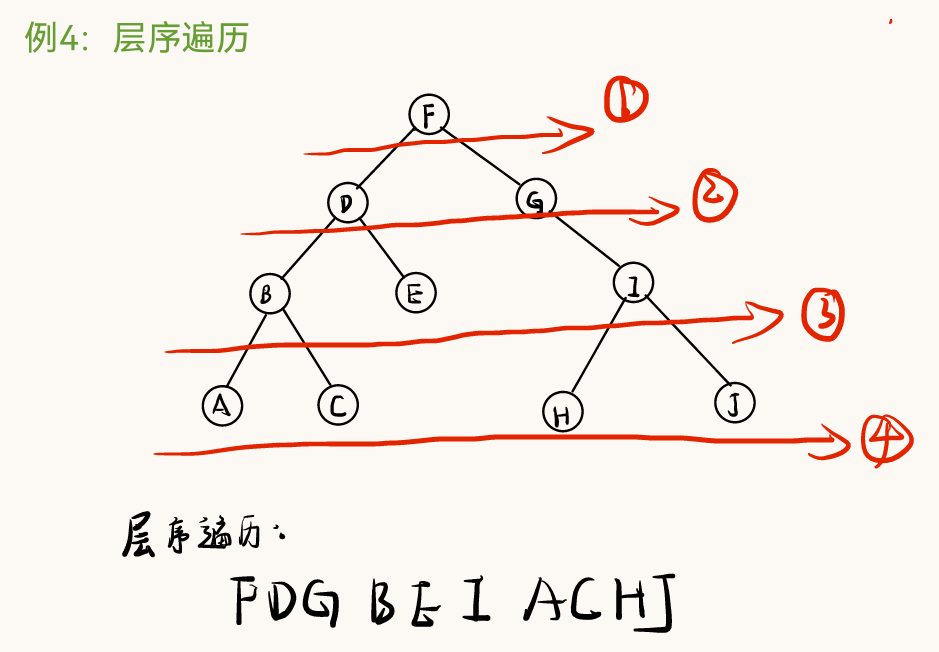
5.2 code
void LevelOrder(BiTree T){
InitQueue(Q); //Initialize auxiliary queue
BiTree p;
EnQueue(Q,T); //Queue root node
while(!IsEmpty (Q)){//Loop if queue is not empty
DeQueue(Q,p);//Team leader node out of the team
visit(p); //Access outbound node
if(p->lchild !=NULL) //If the left subtree is not empty, the root node of the left subtree will join the queue
EnQueue(Q,p->lchild);
if(p->rchild !=NULL) //If the right subtree is not empty, the root node of the right subtree will join the queue
EnQueue(Q,p->lchild);
}
}
6, Constructing binary tree from traversal
6.1 test method 1
Middle order traversal + before and after, any one of the sequence traversal can form a binary tree.
Exams often give two sequences (one of which must be traversed in time) and then draw a binary tree or push another traversal
- Examples
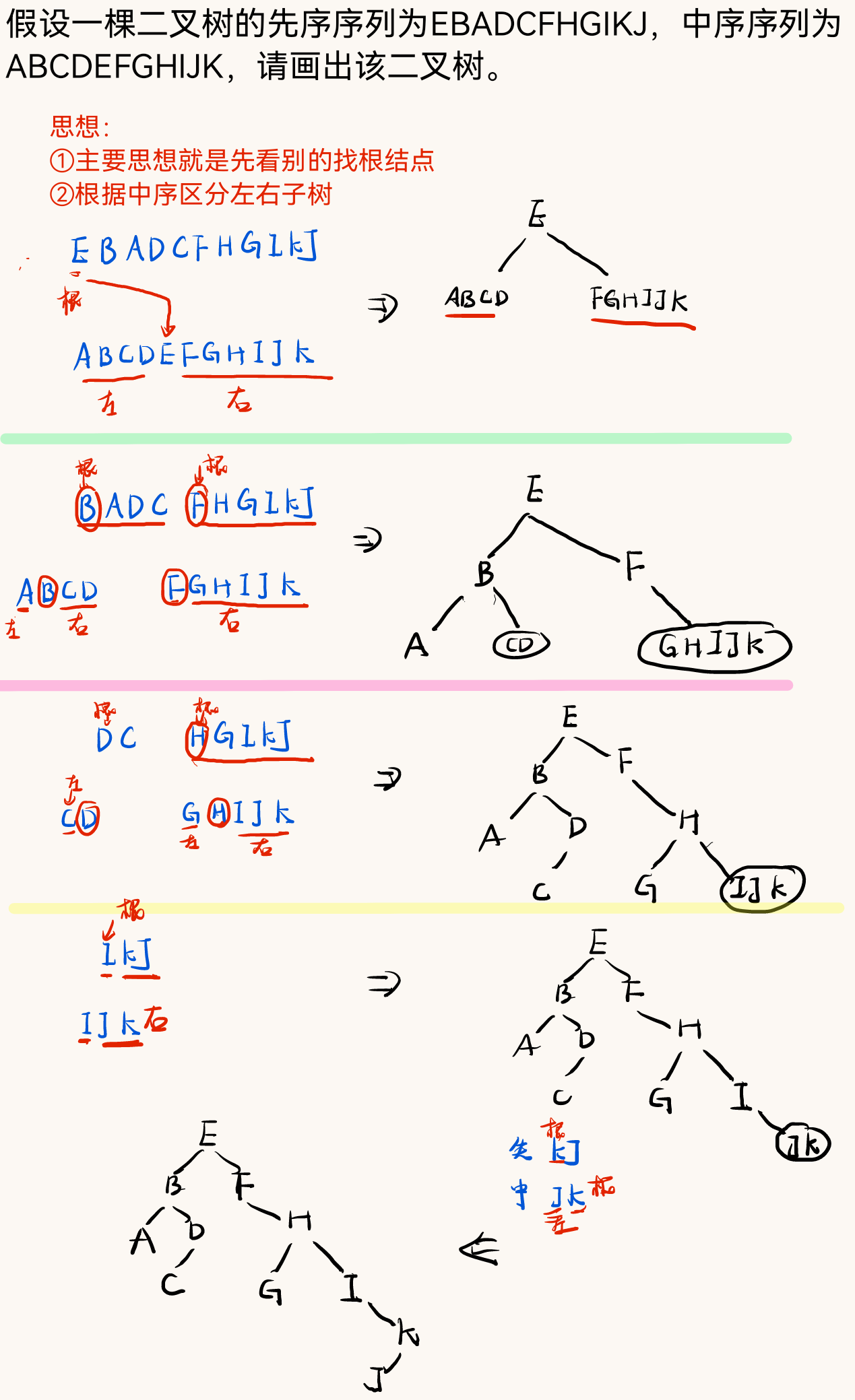
6.2 common pit digging multiple-choice questions
- Let a and b be two nodes on a binary tree. When traversing in middle order, the condition that a is in front of b is that a is to the left of b.
- The relative order of leaf nodes in the preorder, middle order and postorder traversal sequences of any binary tree does not change.
- N and m are two nodes on a binary tree. When traversing the middle order, the condition before n is m is that n is the ancestor of M
- N and m are two nodes on a binary tree. When traversing in post order, the condition that n is before M is that n is the descendant of M
- The pre order traversal is opposite to the post order traversal. For example, the pre order traverses ABC and the post order traverses CBA, indicating that the tree only has a degree of 1
7, Clue binary tree
7.1 basic concepts
- The so-called binary tree traversal is to arrange all nodes in the binary tree into a sequence.
- In ordinary binary tree traversal, especially binary linked list, it can only represent a parent-child relationship. Can not reflect the relationship between the precursor and the successor of the element.
- There are n+1 null pointers in a binary tree with n nodes.
7.2 node structure and structure code
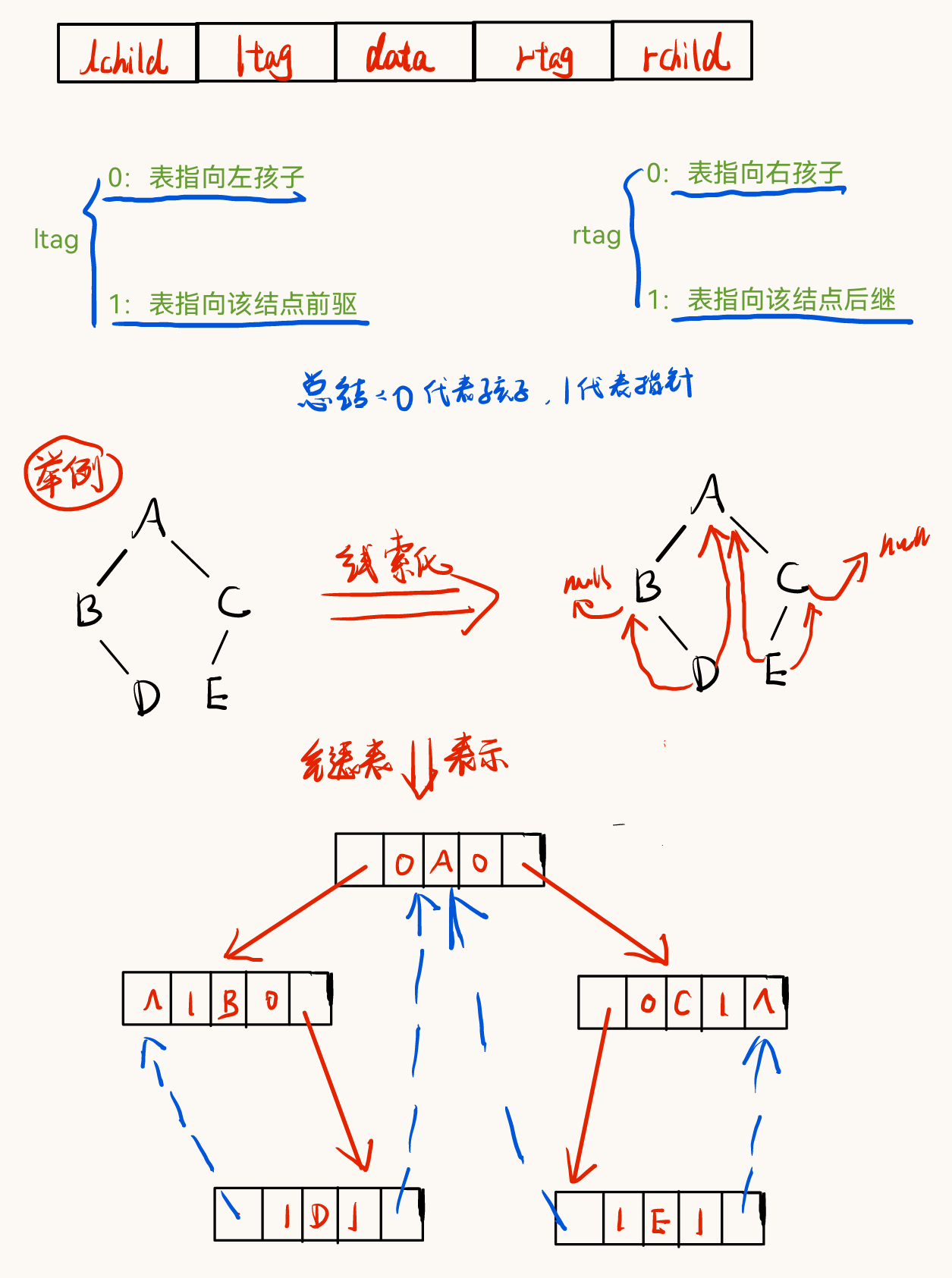
typedef struct ThreadNode{
ElemType data;
struct ThreadNode *lchild,*rchild;//Left and right child pointers
int ltag,rtag; //Left and right clue signs 0 represent children, and 1 represents pointer
}ThreadNode,*ThreadTree;
7.3 handwritten construction clue binary tree (regular test)
Classic example, this problem can basically solve most manual problems
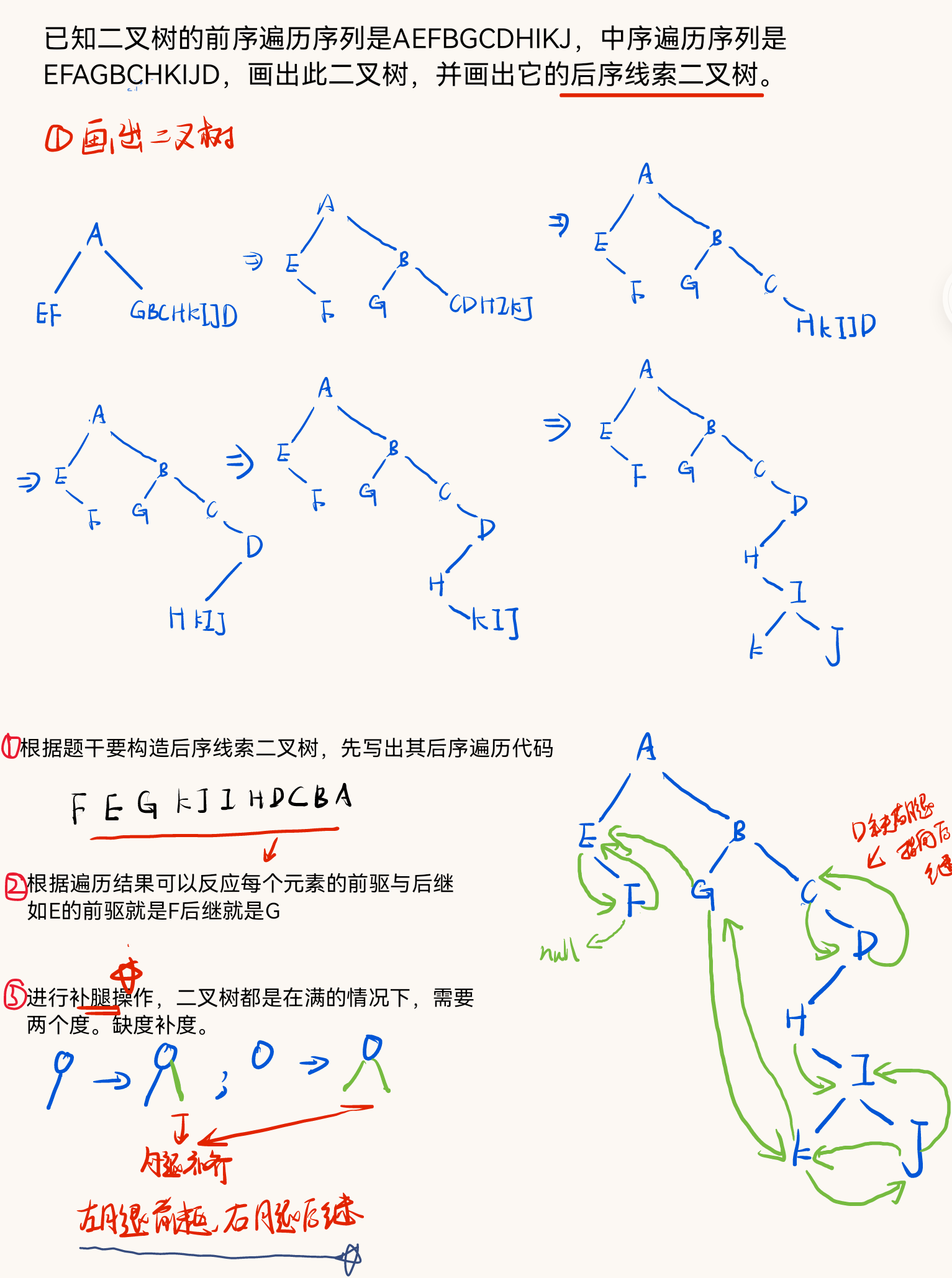
7.4 traversal of clue binary tree
Insert the code slice here